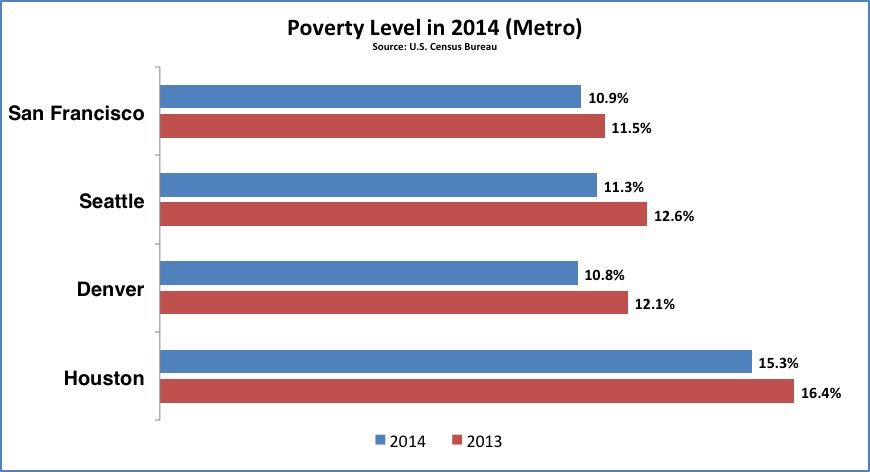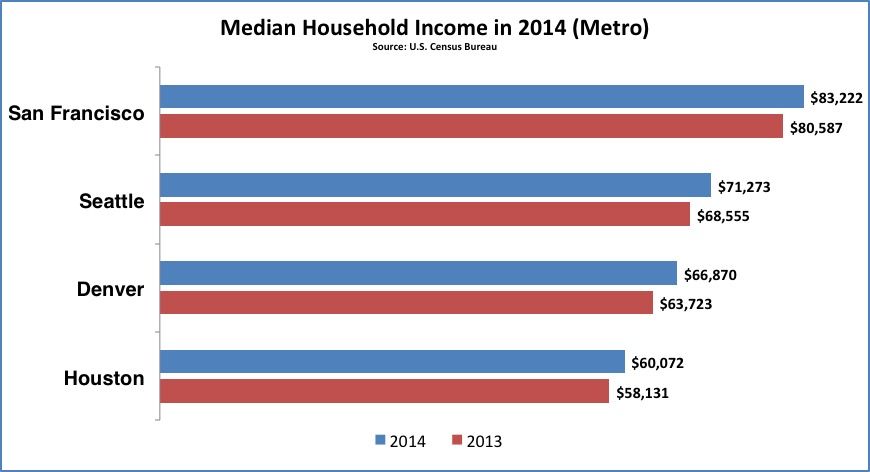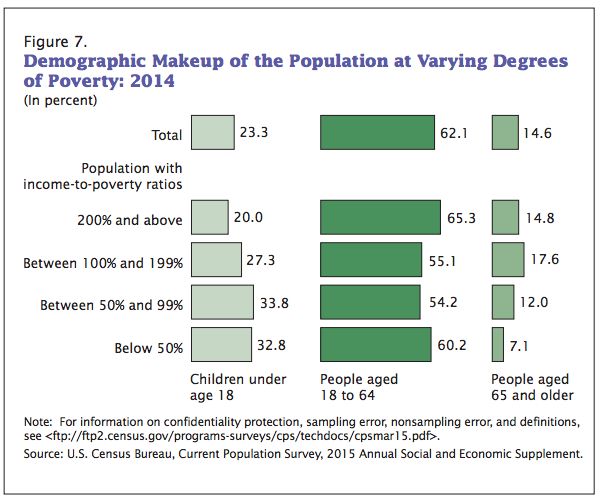The national poverty rate and median income level both went unchanged in 2014, despite the economy posting better job growth than any year since Y2K. That’s one of the ominous takeaways from new figures released yesterday by the U.S. Census Bureau in its Current Population Survey (CPS). Those worrisome signs were then redoubled with the Bureau’s annual American Community Survey (ACS) numbers, released this morning. Essentially, the duo of data dumps portrays an economy recovering strongly from the Great Recession and yet leaving lower-income people behind.
Given the nation’s shrinking unemployment rate — which, in 2014, was lowered by more than a percentage point for the second consecutive year — several prognosticators predicted in advance of the Census numbers that there would be a modest decrease in the poverty rate. Instead, the new data point to nearly 47 million people, or, one in seven Americans, living below the poverty line last year. Change from 2013 is statistically insignificant, meaning there was flat “progress” for the fourth year in a row. The same is true of national median income, marking the third year in a row that’s occurred.
While the CPS is the Census Bureau’s official measure of national poverty and income, it’s worth noting that some of the results from the American Community Survey — considered the gold standard for state- and metro-level numbers, not national ones — differed considerably. The ACS showed a 2.7 percent increase in median incomes, compared to the year before ($53,657 in 2014; $52,250 in 2013) — which would be the second-best year-over-year increase since 2008, using ACS data. Those are unofficial numbers, of course, but the disparity between the data sets just goes to show how hard it is to accurately survey a phenomenon like poverty.
As for that city-level data, the ACS uses the Metropolitan Statistical Area (MSA) as the geographical boundaries by which to measure economic indicators of urban regions. Out of the 25 largest MSAs, there were only four that registered statistically significant improvements in both poverty and median income in 2014. They were the Denver, Houston, San Francisco and Seattle metros.


One hopeful sign in the ACS data was that none of the 25 largest MSAs had a statistically different poverty rate that registered an increase — meaning all went down or were flat. Washington, D.C., had the highest median household income ($91,193) and lowest poverty rate (8.7 percent) out of the 25 largest MSAs, although the city didn’t register a significant change in either metric last year.
There is also a revealing table in the CPS report on the income-to-poverty national ratio, which is a measurement of how close a family’s income is to the poverty line. (A family with an income-to-poverty ratio of 50 percent means they’d need to double their income to reach the federal poverty threshold.) Though none of the categories showed marked difference compared to 2013, the graphic is a telling indicator of the depth of poverty that remains in the country, despite the economic rebound over the last few years.

(From U.S. Census Bureau’s Current Population Survey)
The Equity Factor is made possible with the support of the Surdna Foundation.

Malcolm was a Next City 2015 equitable cities fellow, and is a contributing writer for the Fuller Project for International Reporting, a nonprofit journalism outlet that reports on issues affecting women. He’s also a contributing writer to POLITICO magazine, Philadelphia magazine, WHYY and other publications. He reports primarily on criminal injustice, urban solution and politics from his home city of Philadelphia.

















